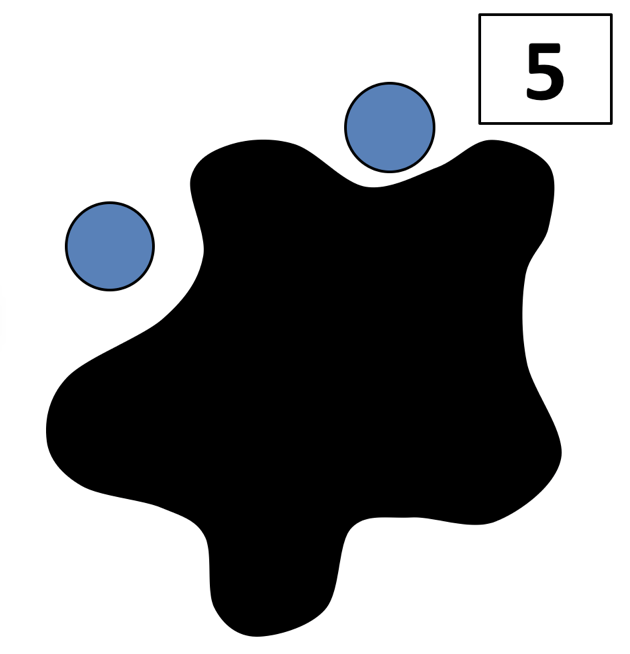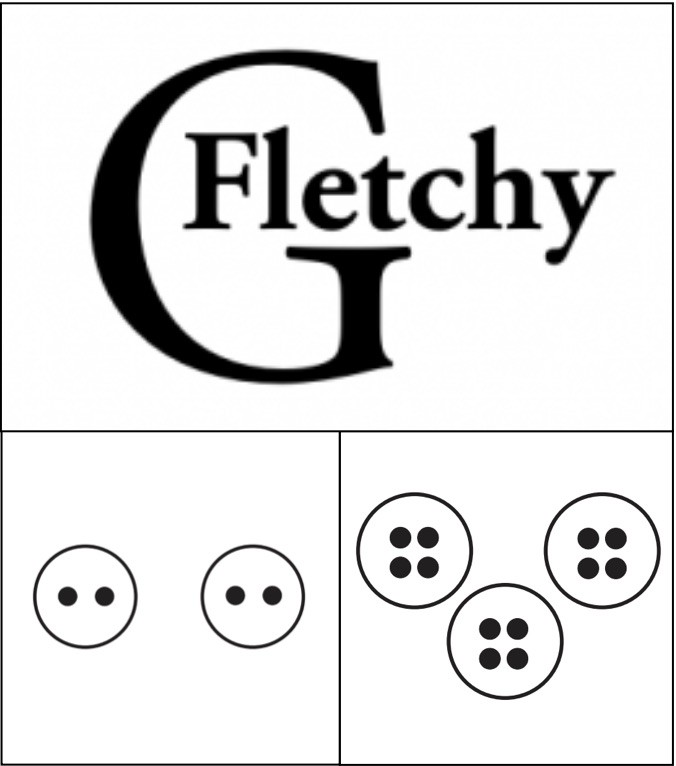The ability to subitize is an important part of developing a strong mathematical foundation and understanding of number (Baroody 1987, 115).
Playing with dice, dominoes, and asking children to find a specific number of items will help them develop subitizing skills and a sense of quantity. Asking to guess how many items you are holding will help develop estimation skills, which is another very important skill that will help children develop their mathematical skills.
Counting With Your Eyes: Look At The Dots
An interesting activity to do with children and adults is to have them look at the image of the dots below for just a few seconds and then look away (or remove the dots from their view).
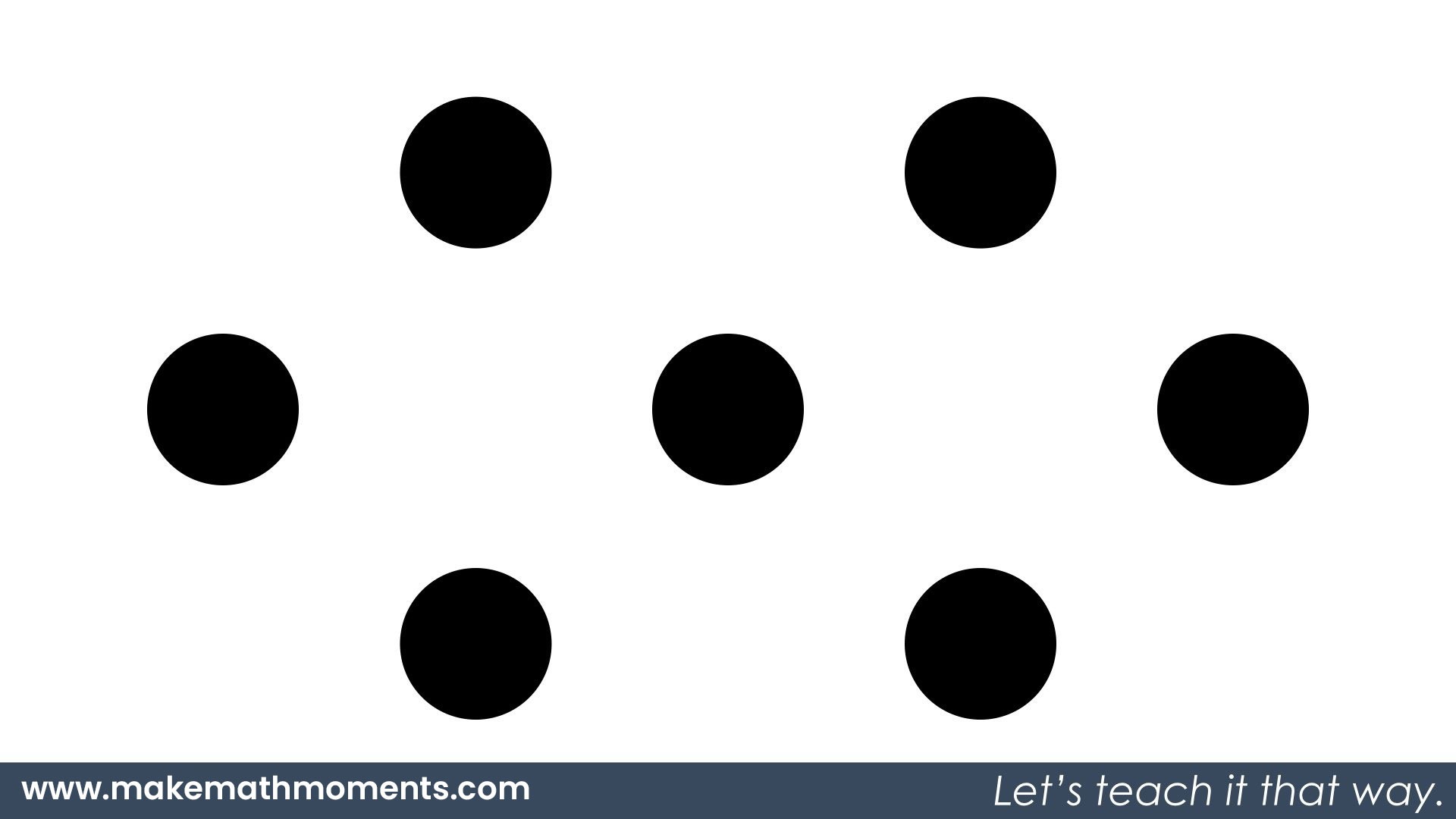
Then, describe what you saw in your mind to someone else.
It’s highly likely that they will “see” it differently than the person next to them.
Even though we are looking at the same dots, it is quite possible that the way you visualized these dots in your mind was different than the next person. This is because the number of dots you are visualizing is too difficult to subitize in a single group.
Here is a video of just a few of the many ways people describe how they visualized the dots:
Watch a Visual Dot Card Number Talk In Action
Watch Jo Boaler, Professor from Stanford University and co-founder of youcubed.org lead a group of students through a visual dot card number talk using this same exercise!
Perceptual Subitizing
When the number of items we are counting is small, we perceptually subitize to “see” the count suddenly.
Most can develop the skill to perceptually subitize quantities of 5 items or less.
Conceptual Subitizing
When the number of items we are counting is too large to “see”, we conceptually subitize to “know” the count suddenly.
When quantities are larger (say, 5 or more), our brains decompose the group into smaller “chunks” and then add them together.
Subitizing in School and At Home
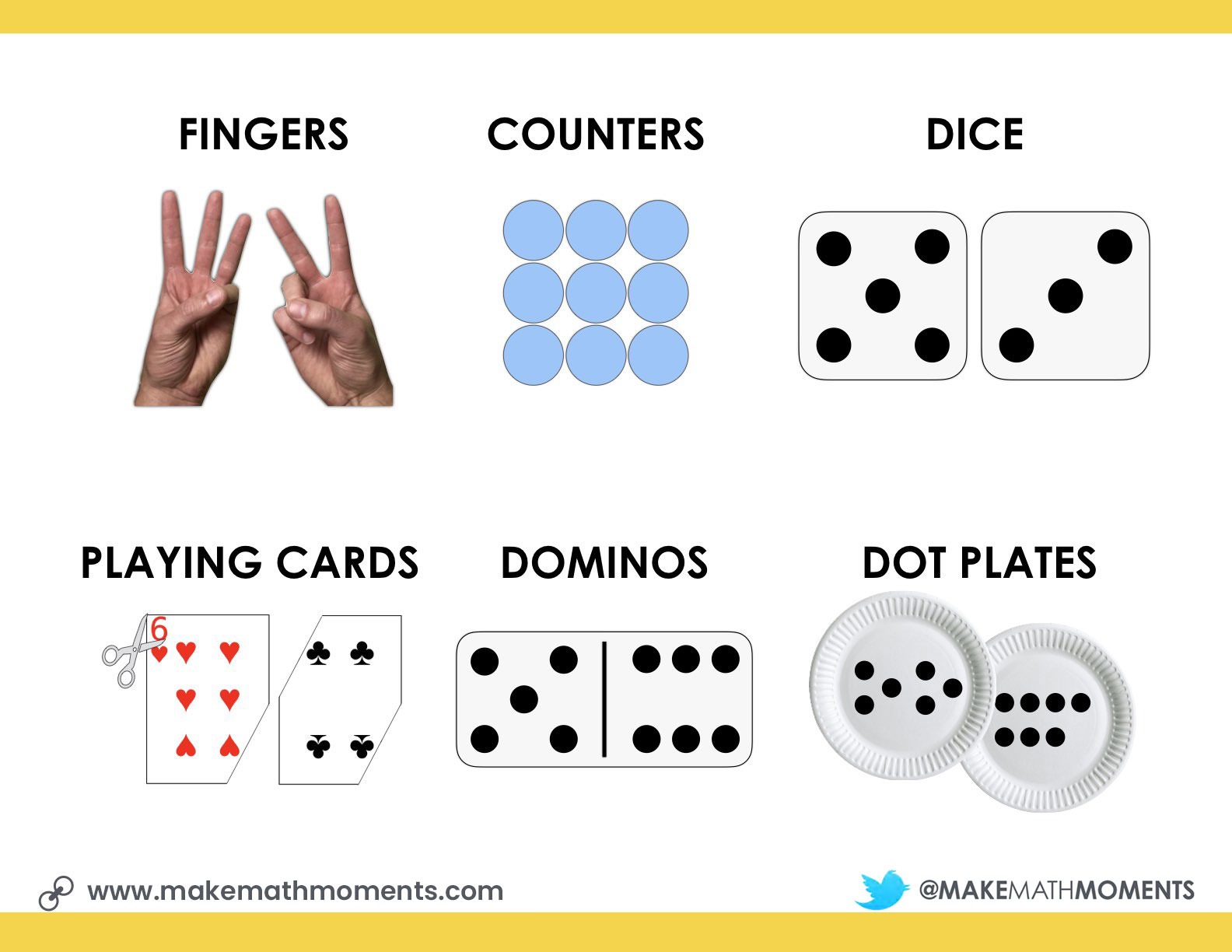
Make 5 / Make 10
Use fingers, dice, playing cards with the corners cut off, dominos or dot plates to “make 5” or “make 10”.
War
Using dice, playing cards, or dot plates, two players roll a die, flip a card or dot plate and each player says their number. Player with the higher number wins the round.
Cover It Up!
One player shows how many counters they have in total. Then, hide some of the counters under the cup while the opponent closes their eyes. How many are under the cup?
First to 20
Using dice, take turns rolling 1 or 2 dice. Say the number rolled and record using a tally chart. First player to 20 wins.
Find It!
Take turns rolling a die. Find the same number of dots and cover it with your colour counter. Get 3 of your counters in a line and you win!
Download the game board here.
ONLINE TOOLS AND RESOURCES
Online Tools and Websites to Promote Counting and Subitizing at Home
You can help develop your child’s foundational mathematics skills at home by making use of the following games and tools for subitizing:
Counting Principles and Videos
Video and image prompts for visualizing subitizing and other principles of counting and quantity.
SPLAT!
Show your kids some dots, then SPLAT! Now, some are covered up. How many dots are under the splat?
Over 50 “SPLAT!” experiences to engage your children in subitizing!
Download and Print FREE Dot Card Sets
Included in the FREE Downloadable Subitizing Guide are 6 unique sets of dot cards you can print, cut out and play games with your children and/or students!
Here are all 6 sets:

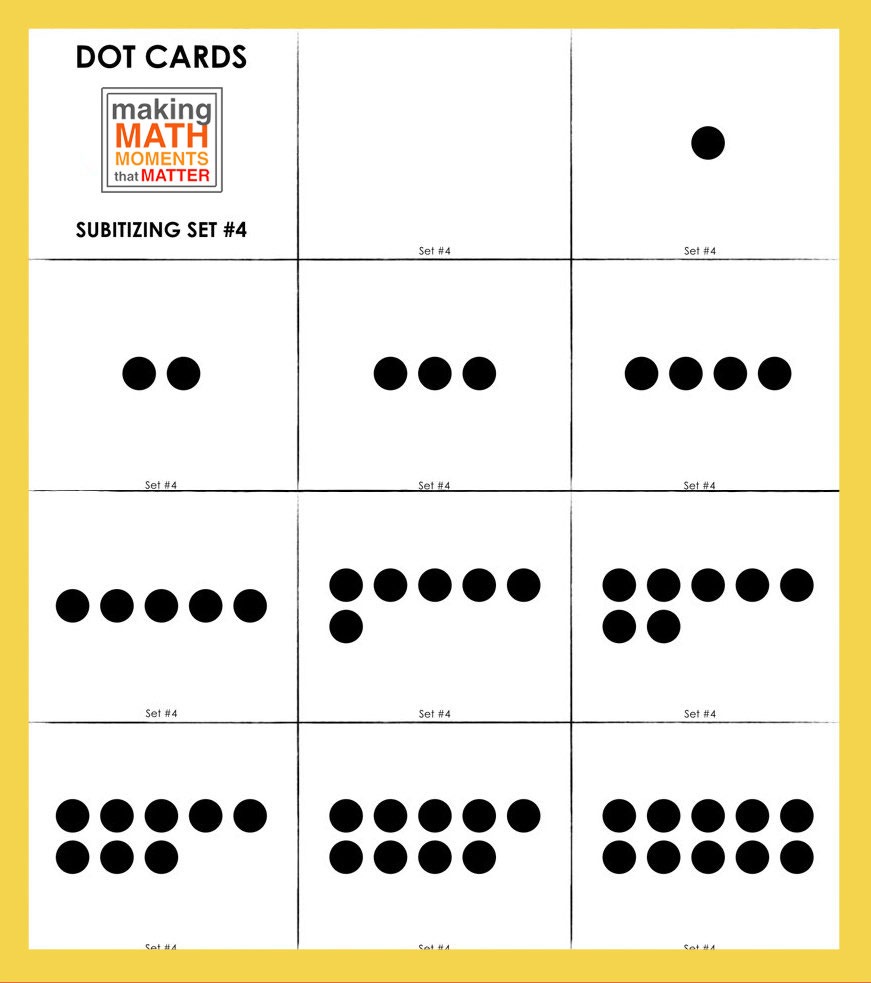
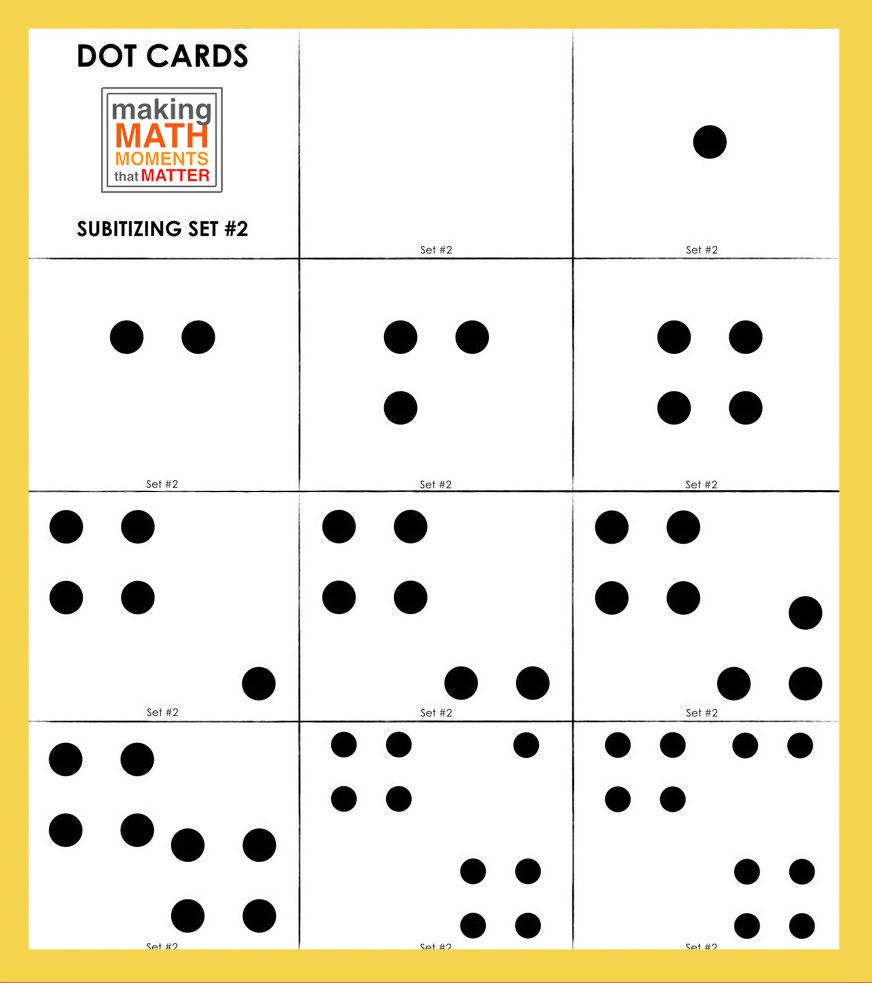

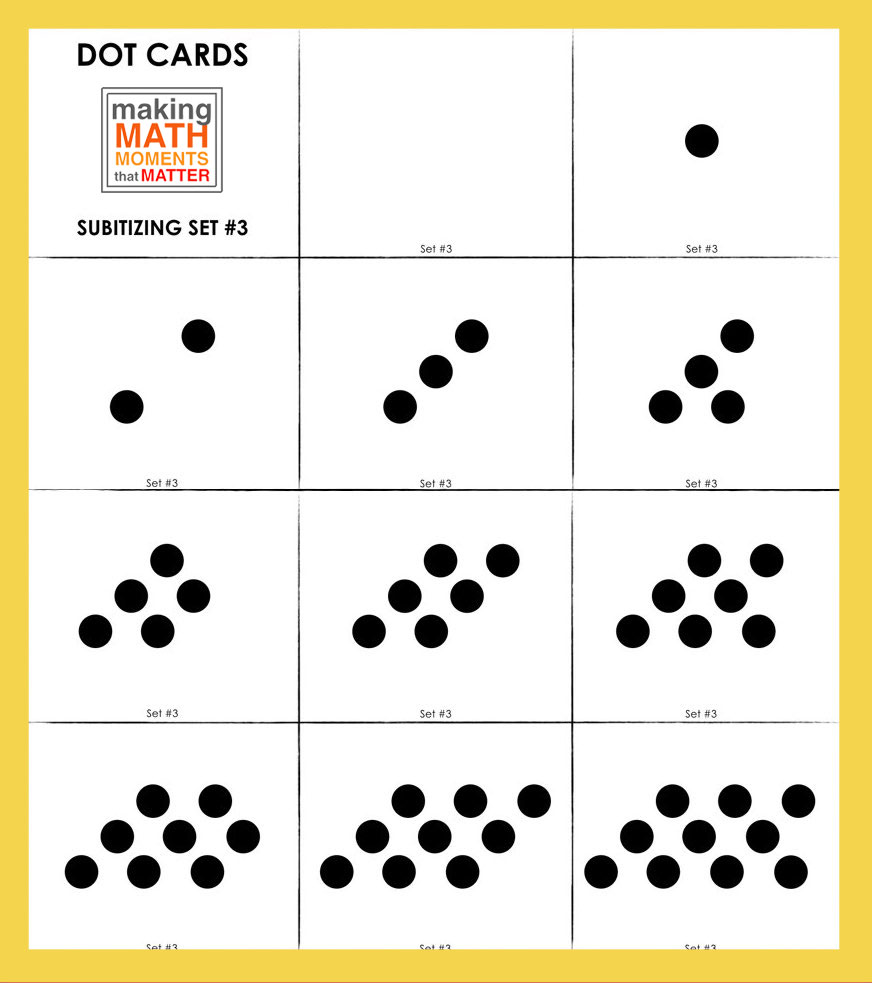
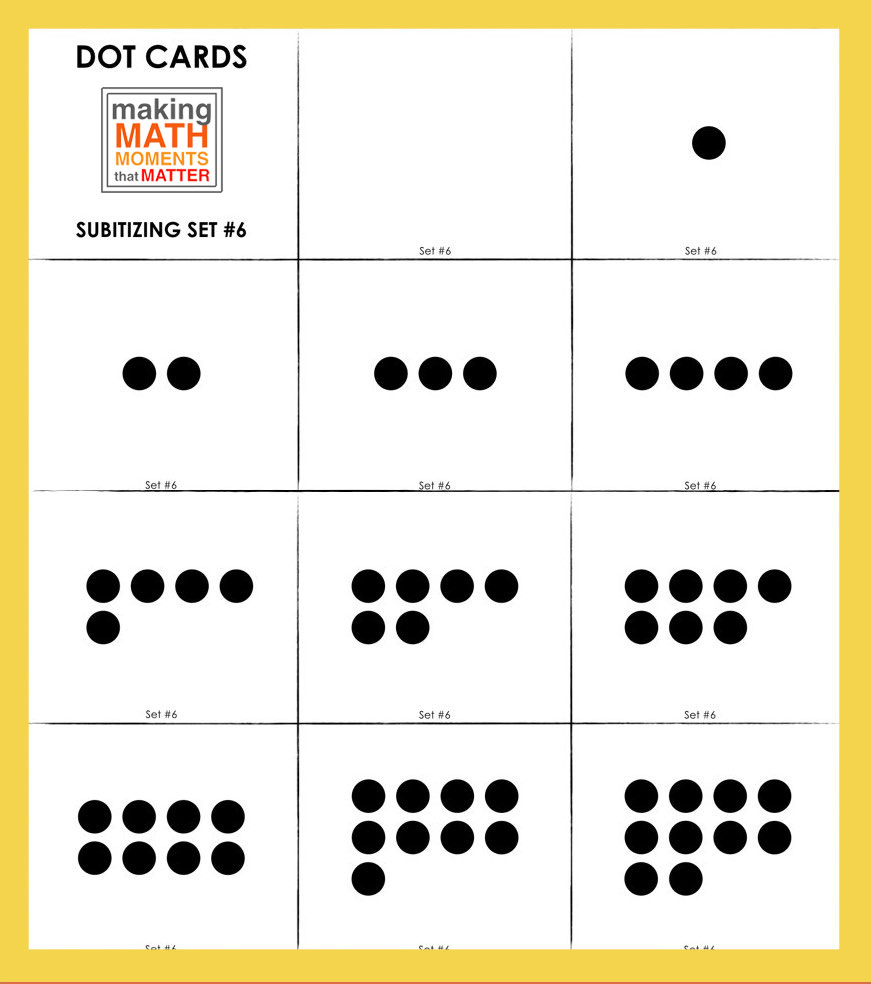
Want More Subitizing Activities?
You can learn more about perceptual and conceptual subitizing and access useful activities by downloading the subitizing guide.



